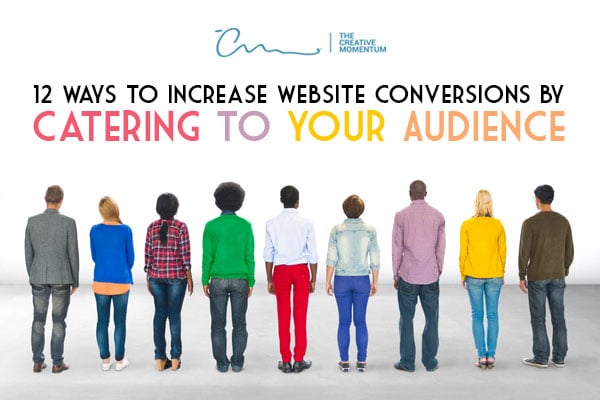
The best way to keep people happy is to give them what they want. We've said it before and we'll say it again.
Give the people what they want.
This is why catering to your audience is the absolute best way to increase website conversions.
The tough part is figuring out what your audience wants or needs — a question even they might not know the answer to until you present them with something new. This creates an especially challenging task for marketers. Even so, these 12 tips provide a great starting point.
1. Assess Your Product or Service Offering
Before you try to figure out what your audience wants, determine what you currently bring to the table. What are the key features and differentiators of your product or service? Make note of even the things you believe are insignificant because what catches people’s attention might surprise you. Once you have a clear idea of what your business has to offer, it’s easier to match that to the needs of your target market.
2. Evaluate Your Conversion Funnel
Take a good look at your current conversion funnel. After all, the last thing you want is to make changes you think will improve conversion rates and then see them tank. Here are some examples of questions you can ask yourself to evaluate your conversion funnel and understand the customer journey better:
- Are you seeing a lot of traffic, but not a lot of leads, i.e. form submissions or phone calls?
- What is the lead time between inquiry and purchase in your customer journey?
- Have you walked through the purchasing process yourself using different browsers and devices to make sure your website doesn't have any technical errors?
- What kinds of problems are your buyers trying to solve that lead them to your website?
Understanding the answers to each of these questions is important and experienced marketers can help you determine how effective the current conversion process is. However, no one can make recommendations before taking a closer look at your audience and its needs.
3. Determine Who Your Audience Is
Experienced marketing professionals can also determine the various sources of your website traffic using website analytics tools. Here are some of the most popular website analytics tools used by marketers:
- Google Analytics
- Google Search Console
- Built-in CMS analytics (for example, HubSpot, SquareSpace, and Wix all have their own analytics)
- Other marketing tech tools with attribution metrics (i.e. HotJar, Adobe Analytics)
Google's two big products, Analytics and Search Console, tend to dominate as they are free and built by the search engine itself. Here is some of the information you can uncover to help you identify characteristics of your audience and use that information to increase your conversions:
- What type of device users are using to access the website
- The geographic locations of your visitors
- The general age range of your visitors
- Major webpages referring traffic to your website
- The most active days and times for your website
To find all of the information above in Google Analytics, take a look at the benchmarking, audience and acquisition tabs under "reports" on the left-hand side of your Google Analytics main screen. We're also including some helpful screenshots below to help you navigate. Another helpful tip: Google's search bar at the top of analytics has not surprisingly evolved to become quite helpful. If you're looking for something, trying typing it in there.
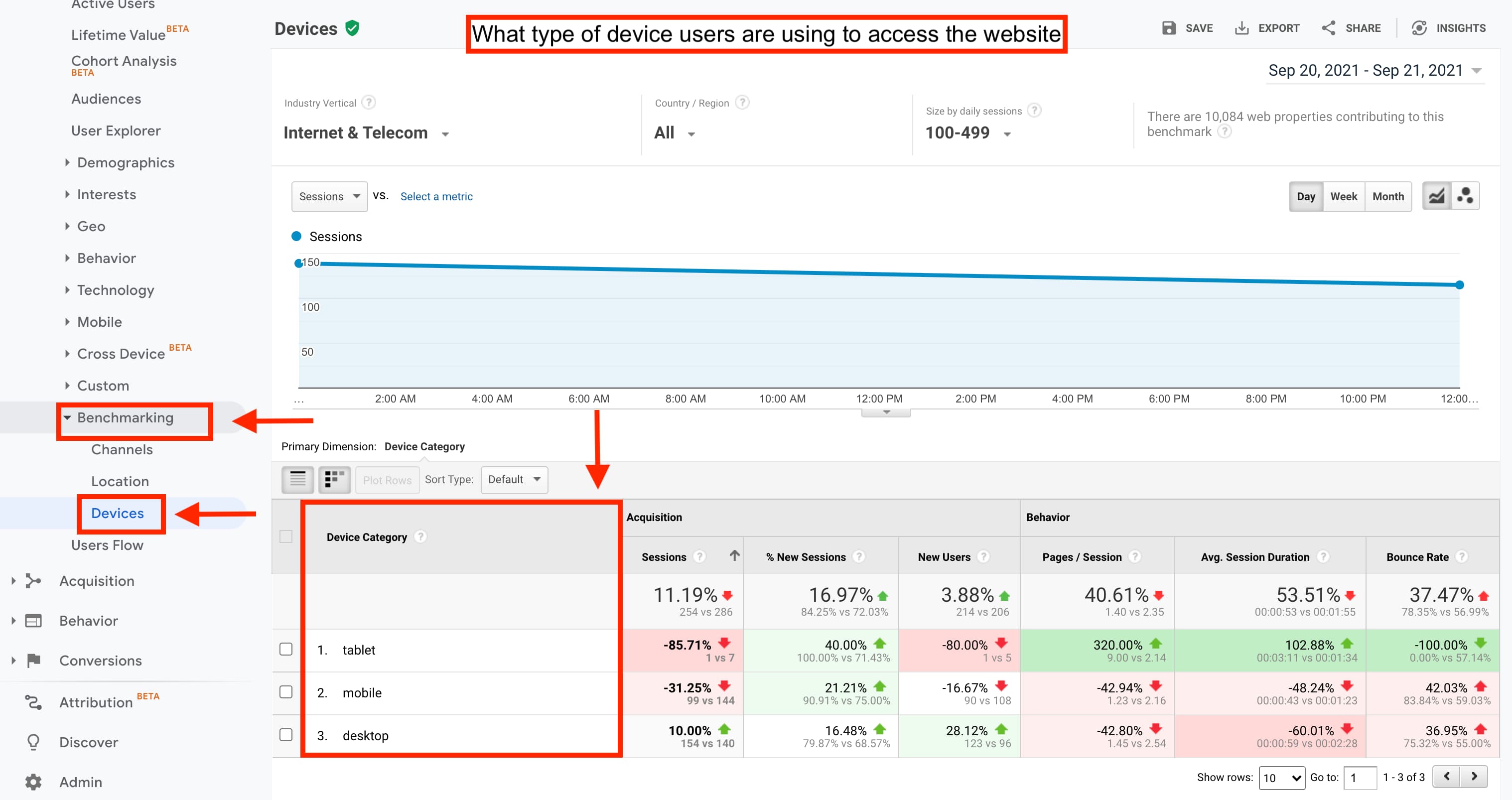
How to navigate to what types of devices users are using to access your site in Google Analytics
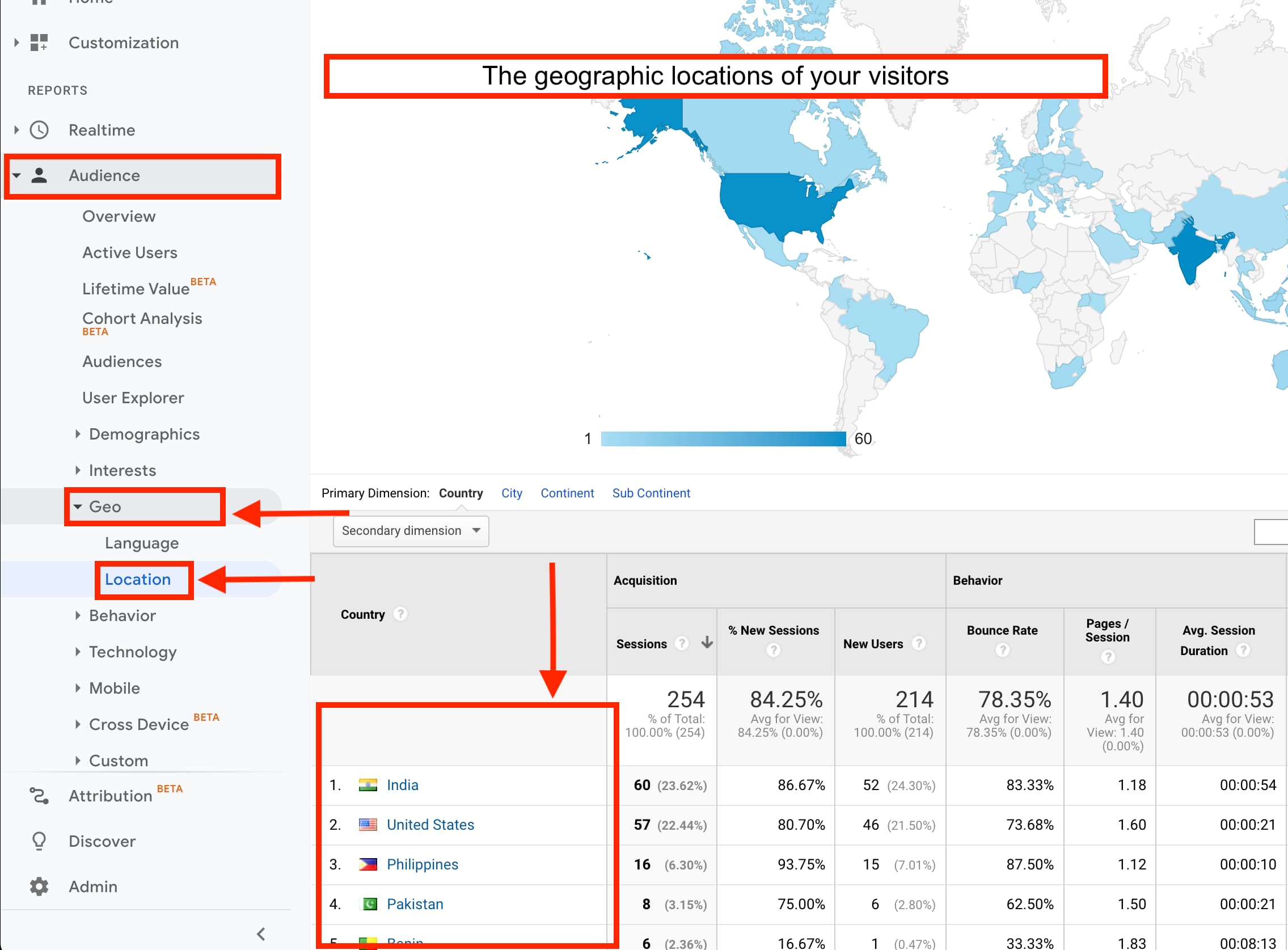
How to navigate to see the geographic locations of your visitors in Google Analytics
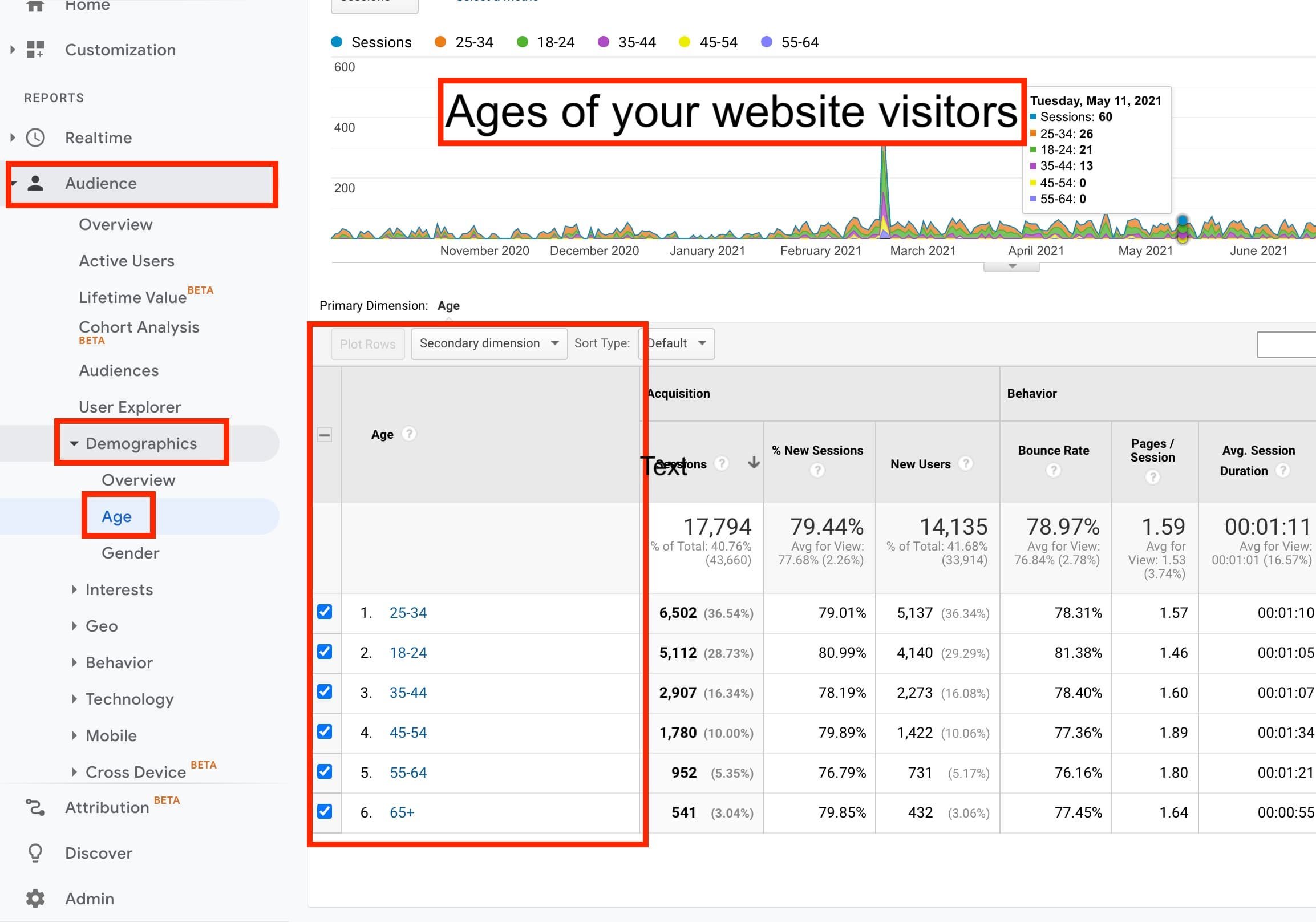
How to navigate to see the ages of your website visitors in Google Analytics.
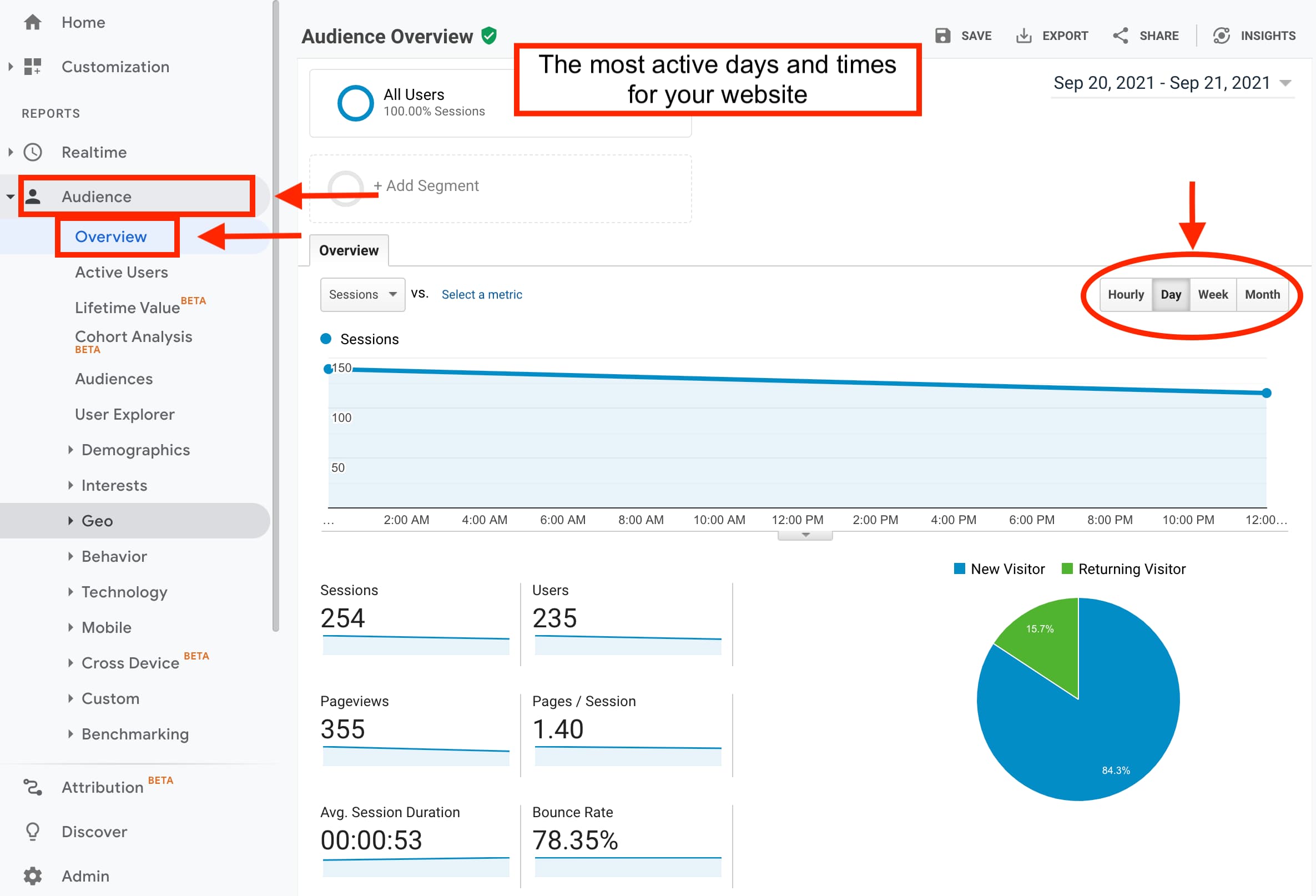
How to navigate to see the most actives days and times for your website in Google Analytics.
4. Talk To Your Customers and Collect Customer Feedback
Ideally, your website isn’t the only way you communicate with your customers. Reach out to them via text, email, social media or website surveys to determine what they love about your website and what they would like to change. Try not to overwhelm your customers by asking a lot of questions or providing time-consuming surveys. Providing an incentive is also acceptable. For example, people who answer the survey could get 50% off their next coffee purchase.
5. Talk To Your Competitor’s Customers
Have you ever wondered why some people choose other products and services over yours? Ask them. It’s fairly easy to find these consumers on social media and engage them. However, be sure to weigh their feedback against what’s currently working for your existing customers. Sometimes, what your competitors’ customers hate most about your business is the same reason your most loyal customers remain.
6. Review Your Existing Feedback
Some business owners refuse to check reviews for fear of seeing poor feedback that might be hurtful. However, this is exactly the kind of feedback you need to see and address. Reviewing all feedback left in the past two or so years will further inform your efforts to determine what people love and hate about your business. If you don’t have many reviews, work with an experienced marketing agency to change this.
7. Involve Customers in Your Business Changes
Modern customers have much closer relationships with the brands they support than former generations. They need to be heard. Involving them in the process of making changes is a great way to accomplish this. Get creative with your A/B testing by sending out polls via email or social media. Test different versions of changes to see which ones resonate more with your audience. Sometimes, you could even end up using neither based on feedback.
8. Simplify Your Site Navigation
Customers often become used to glitches and confusing additions on websites and know how to work around them. Even so, it significantly hinders the user experience. Make your navigation so simple that someone who has no experience with your business or its industry can find their way around with ease. This will reduce confusion and make it easier for people to access the information they need to make a purchasing decision.
9. Note What Goes Viral
People are unpredictable — especially modern-day customers. This can make it practically impossible to predict what will go viral. Even so, if you take the time to see what your customers love and consume outside of your product or service, you will get a good idea of how to create content they will enjoy. Great content is an excellent way to organically increase website conversions.
10. Personalize Your Content
So, you talked to your customers to get some feedback and build a better website, but the conversation shouldn’t stop there. Continue chatting with them. Incorporate this into the way you phrase your website content and accompanying social media posts. When they access web pages, the information should be simple and written in such a way that it feels as if you’re speaking directly to the person reading it. Creating a log-in experience on the website can also assist with personalization.
11. Make Your Website Faster
No matter what your product offerings are or the current speed of your website, all customers will appreciate it being faster. Faster websites also keep bounce rates low. Leveraging AMPs is the most common way to improve loading time. Other options include reducing the use of large images and videos that play automatically.
12. Make It Mobile Friendly
One CNBC article estimates that 72% of the world population will only use their phones to access the internet by 2025. Statista estimates that mobile devices currently make up 54.8% of global internet traffic. Consequently, companies need to prioritize mobile users to remain competitive and to increase conversion rates by providing a website experience customers love.
As an inbound marketing agency, we specialize in creating and understanding buyer personas, and in personalizing your marketing efforts. We enjoy working with clients who want to increase website conversions by improving their value propositions and solving their customers' problems. Request a quote from our experienced professionals to get started.






